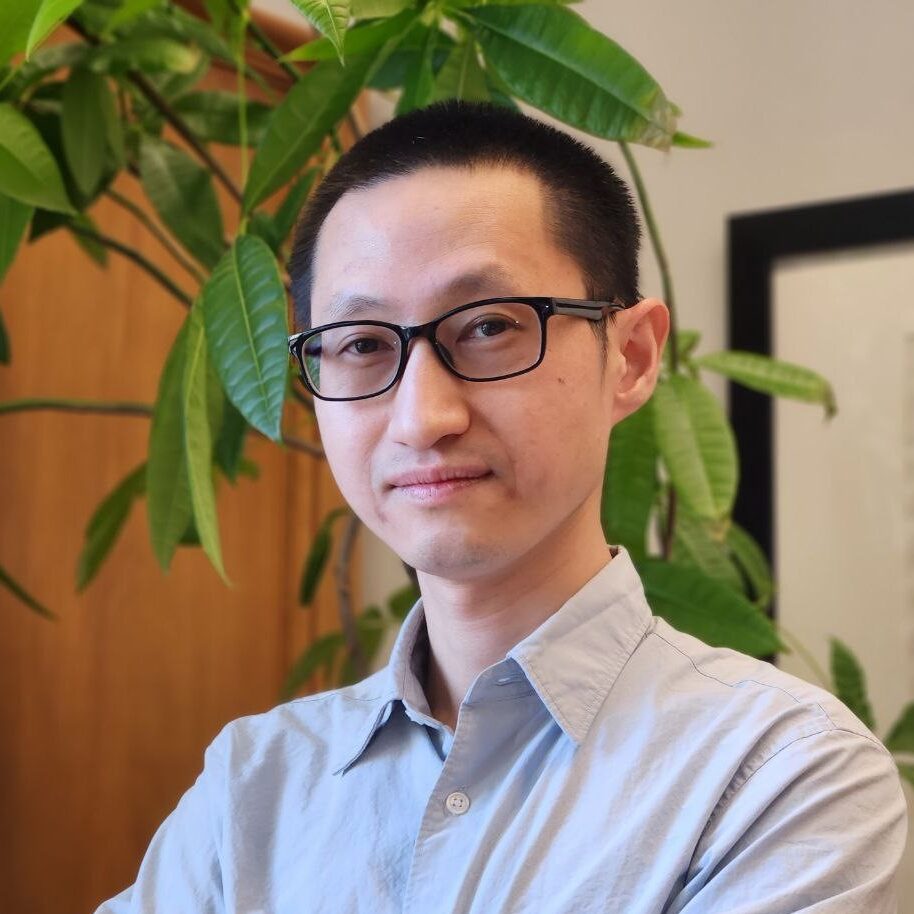
Kai Huang | BSc (USTC), PhD (NUS)
Assistant Professor, Department of Materials Science & Engineering
Office: WB 135
E: nanokai.huang@utoronto.ca
Research Group: Laboratory for Nanobiophotonics
Research Areas
We develop nanomaterials with unconventional optical properties for innovative biomedical applications. The motivation behind our research stems from the fact that biophotonic technologies can significantly improve disease diagnosis and treatment. However, these technologies are currently hindered by their dependence on short-wavelength excitation, which demands invasive light delivery systems for photoactivations and results in autofluorescence noise in bioimaging that reduces imaging quality. To overcome these constraints, we are developing innovative luminescent nanomaterials that exhibit anti-Stokes shift upconversion luminescence or superlong lifetime persistent luminescence. These nanomaterials will bring deep tissue-penetrating near-infrared (NIR) light for wireless NIR-optogenetic cancer immunotherapy or enable ultrasensitive bioimaging without the need for time-gating, respectively. Our research not only holds the potential to revolutionize biophotonic tools for biomedical research and clinical applications, but also provides an opportunity to deepen our understanding of photophysics by discovering new phenomena, such as superfluorescence at room temperature from nanocrystals. Several specific research topics include:
- Synthetic inorganic chemistry: controllable nanocrystal synthesis, engineering of heterostructured nanoparticles, hybrid nanoparticle systems, surface modifications/biofunctionalizations
- Unconventional nanophotonics: upconversion luminescence, persistent luminescence, manipulation of energy transfers, superfluorescence, nanolasers
- Advanced applications: wireless immunotherapy, NIR-optogenetics, photodynamic therapy, bioimaging/detection, optical display, light-based encryption
Research Clusters
- Biomaterials
- Nano, 2D & Composite Materials
- Smart Materials & Devices
- Electronics, Photonics & Sensors
Dr. Kai Huang is an Assistant Professor at the Department of Materials Science and Engineering, University of Toronto. He received his Bachelor's degree in Materials Chemistry from the University of Science and Technology of China (USTC). He later moved to Singapore to earn his Ph.D. in Biomedical Engineering at the National University of Singapore (NUS). After completing his Ph.D., Dr. Huang pursued further training as a postdoctoral researcher at the University of Massachusetts Chan Medical School. Dr. Huang works at the intersection of materials science and biomedical research; and he is particularly interested in exploring novel nanomaterials with unconventional optical properties which serve as the nanoprobes or nanotransducers for cancer diagnosis and therapy. He has published 30 papers in the last five years, which received more than 2500 citations.
Link to list of full publications
Selected publication:
-
K. Huang, L. Liu, Y. Huang, Y. Wang, Y. Zhou, & G. Han. Remote control of cellular immunotherapy. Nature Reviews Bioengineering. 2023, 1: 440.
-
K. Huang, K.K. Green, L. Huang, H. Hallen, S.F. Lim, & G. Han. Room Temperature Upconverted Superfluorescence. Nature Photonics. 2022, 16: 737.
-
K. Huang, N. Le, J.S. Wang, L. Huang, L. Zeng, W.C. Xu, Z. Li, Y. Li & G. Han. Designing next generation of persistent luminescence: recent advances in uniform persistent luminescence nanoparticles. Advanced Materials. 2021, 2107962.
-
N.T. Nguyen, K. Huang (co-first authors), H. Zeng, J. Jing, R. Wang, S. Fang, J. Chen, X. Liu, Z. Huang, M.J. You, A. Rao, Y. Huang, G. Han & Y. Zhou. Nano-optogenetic engineering of CAR T-cells for precision immunotherapy with enhanced safety. Nature Nanotechnology. 2021, 16: 1424.
-
K. Huang, Z. Li, Y. Li, N. Yu, X. Gao, L. Huang, S.F. Lim & G. Han. Three-dimensional colloidal controlled growth of core–shell heterostructured persistent luminescence nanocrystals. Nano Letters. 2021, 21(12): 4903.
-
L. He, P. Tan, L. Zhu, K. Huang (co-first authors), N.T. Nguyen, R. Wang, L. Guo, L. Li, Y. Yang, Z. Huang, Y. Huang, G. Han, J. Wang & Y. Zhou. Circularly permuted LOV2 as a modular photoswitch for optogenetic engineering. Nature Chemical Biology. 2021, 17: 915.
-
L. He, Z. Huang, K. Huang (co-first authors), R. Chen, N.T. Nguyen, R. Wang, X. Cai, Z. Huang, S. Siwko, J. Walker, G. Han, Y. Zhou & J. Jing. Optogenetic control of non-apoptotic cell death. Advanced Science. 2021, 8(13): 2100424.
-
K. Huang, X. Dou, Y. Zhang, X. Gao, J. Lin, J. Qu, Y. Li, P. Huang & G. Han. Enhancing light and X-ray charging in persistent luminescence nanocrystals for orthogonal afterglow anti-counterfeiting. Advanced Functional Materials. 2021: 2009920.
-
Z. Li, Y. Zhao, K. Huang (co-first authors), L. Huang, Y. Zhang, H. Yang & G. Han. Enhancing rechargeable persistent luminescence via organic dye sensitization. Angewandte Chemie International Edition. 2021, 60(29): 15886.
-
K. Huang, Z. Li, J. Lin, G. Han & P. Huang. Two-dimensional transition metal carbides and nitrides (MXenes) for biomedical applications. Chemical Society reviews. 2018, 47(14): 5109.
MSE459: Synthesis of Nanostructured Materials
Chemistry Labs for MSE244: Inorganic Materials Chemistry and Processing
MSE245: Organic Materials Chemistry and Properties